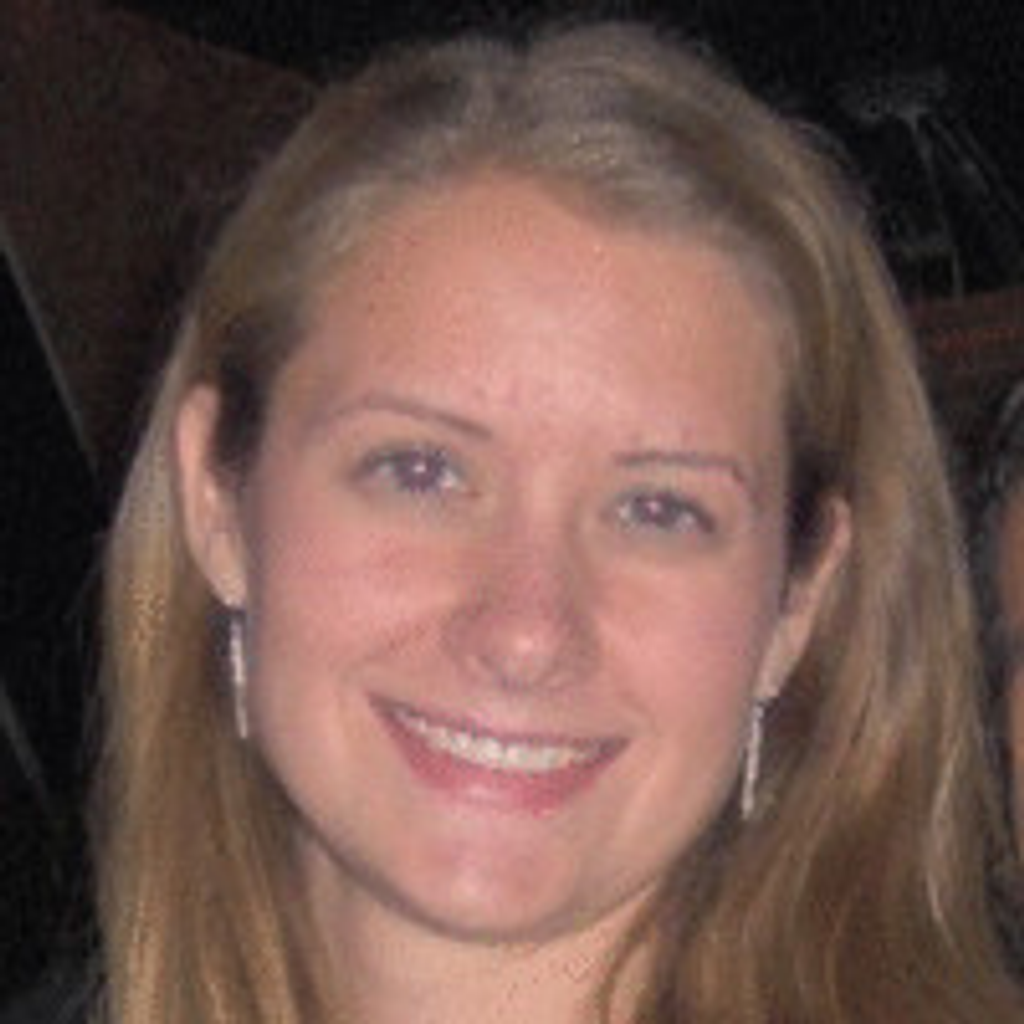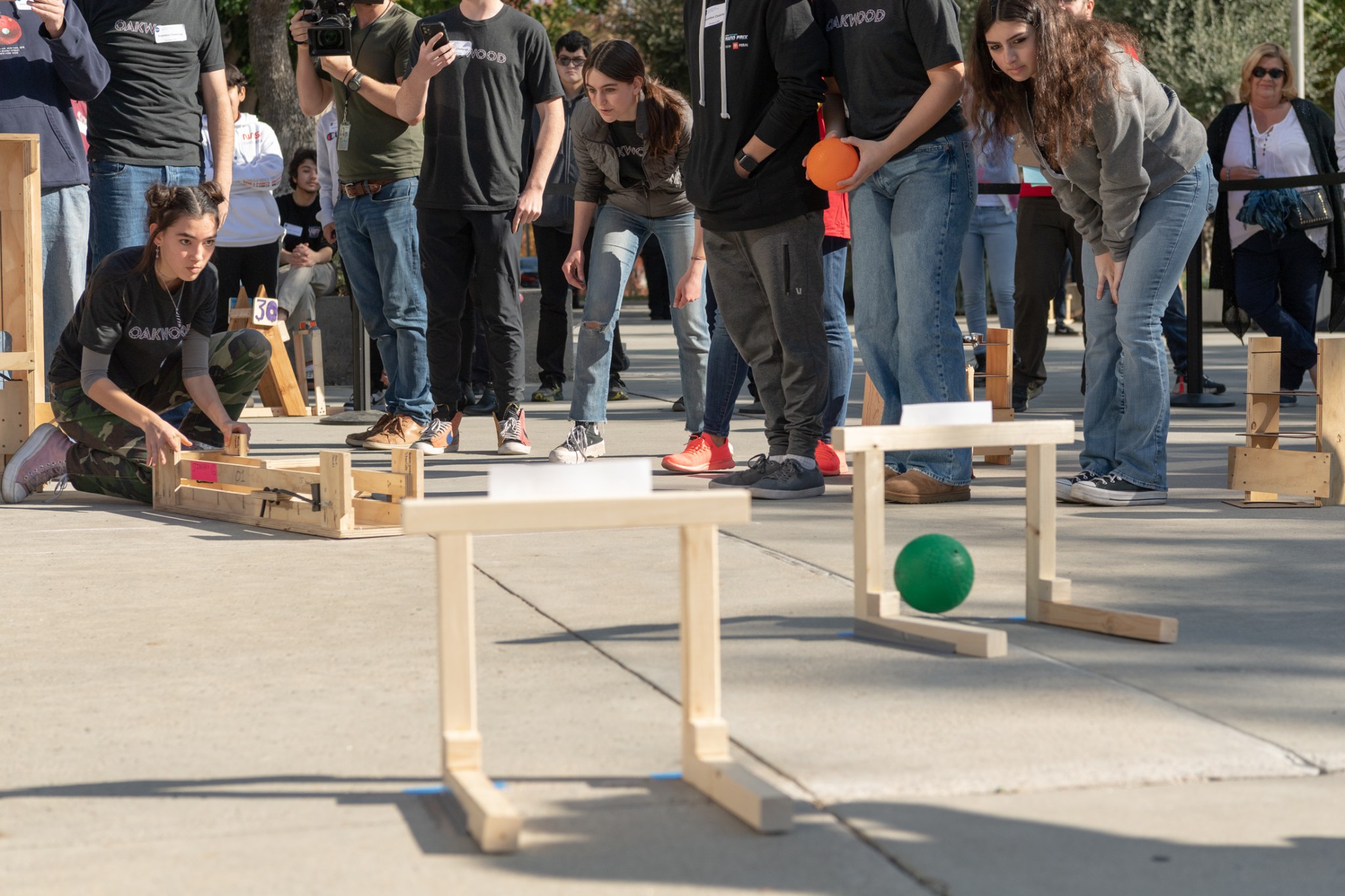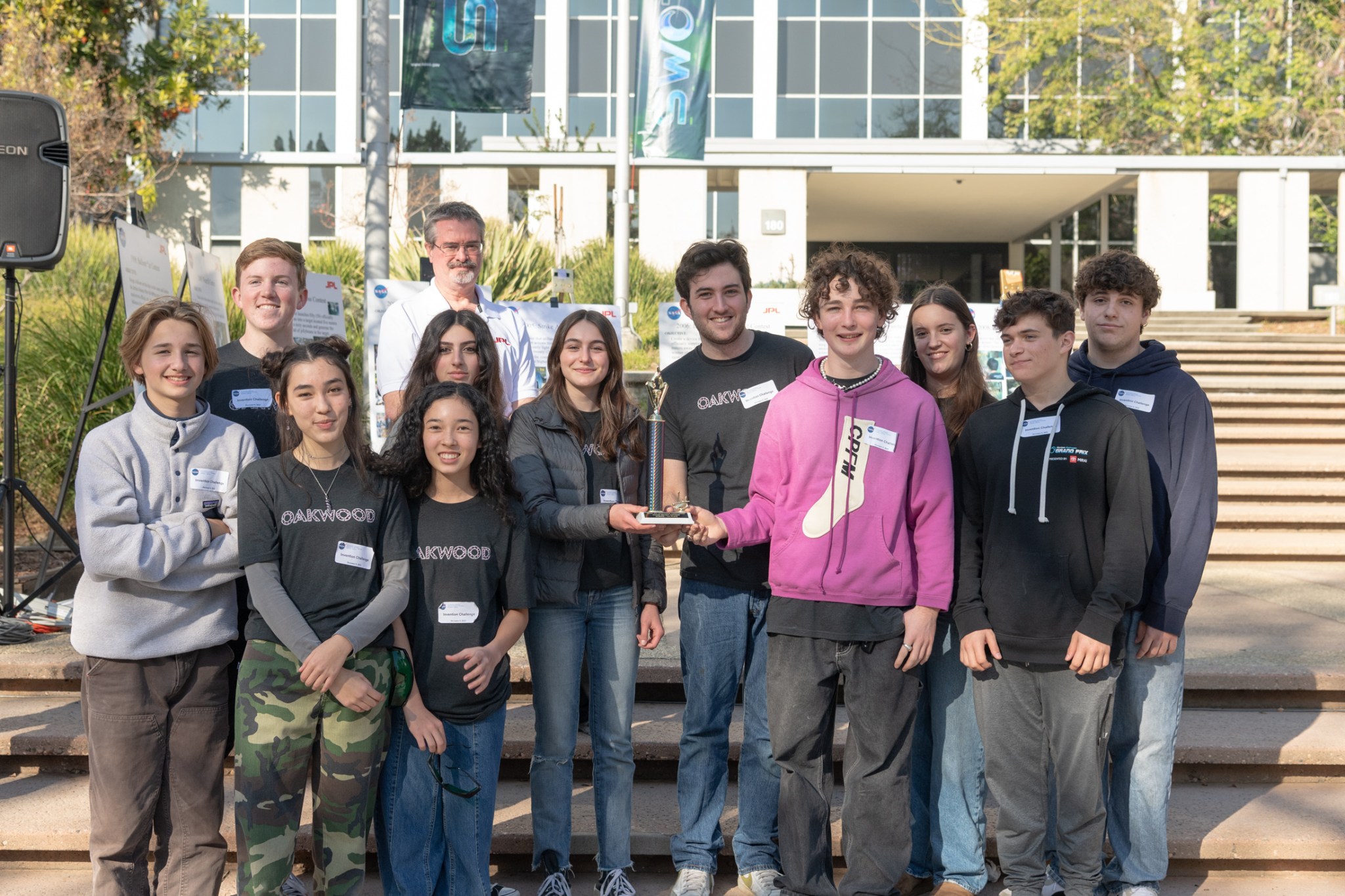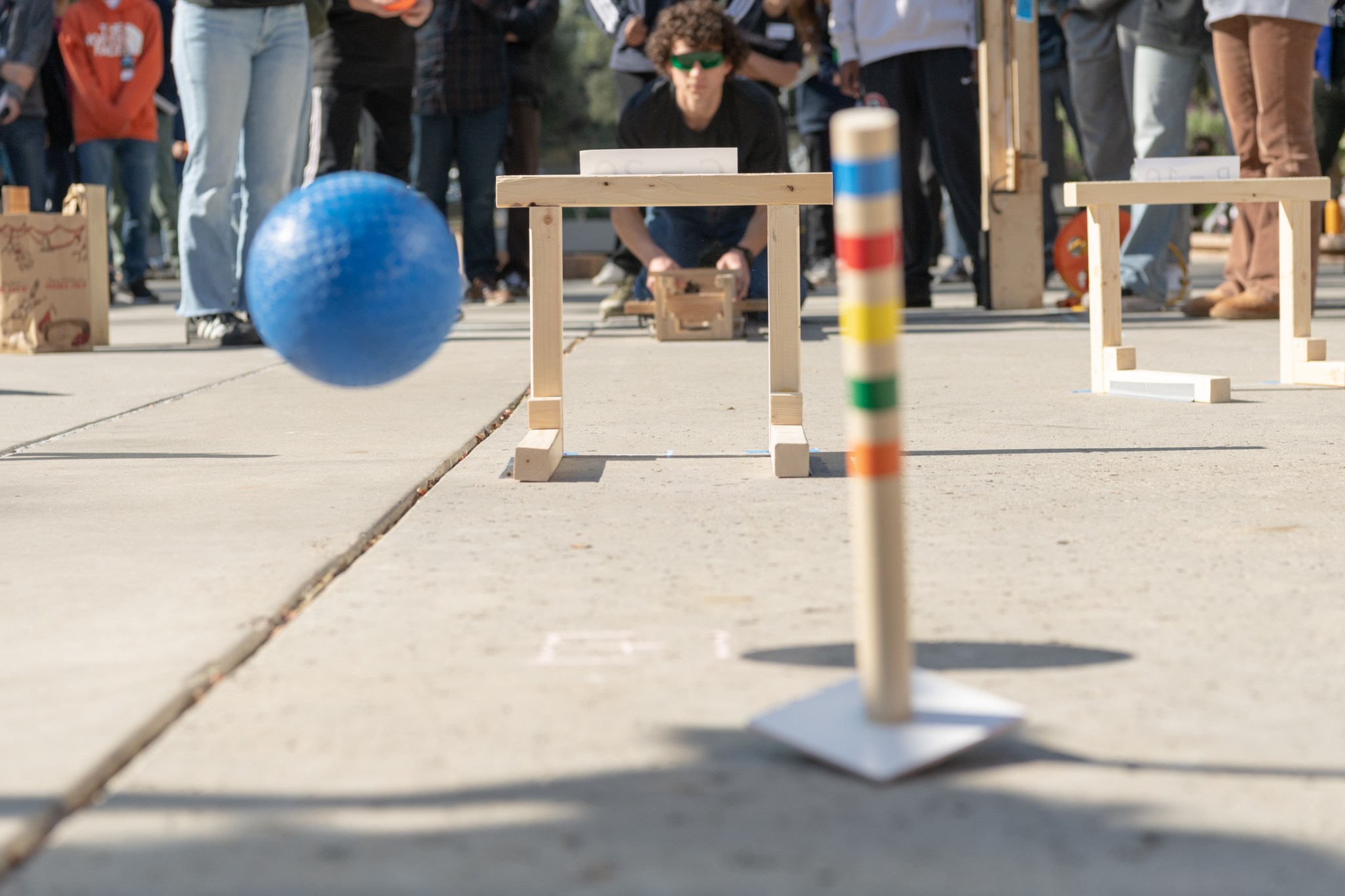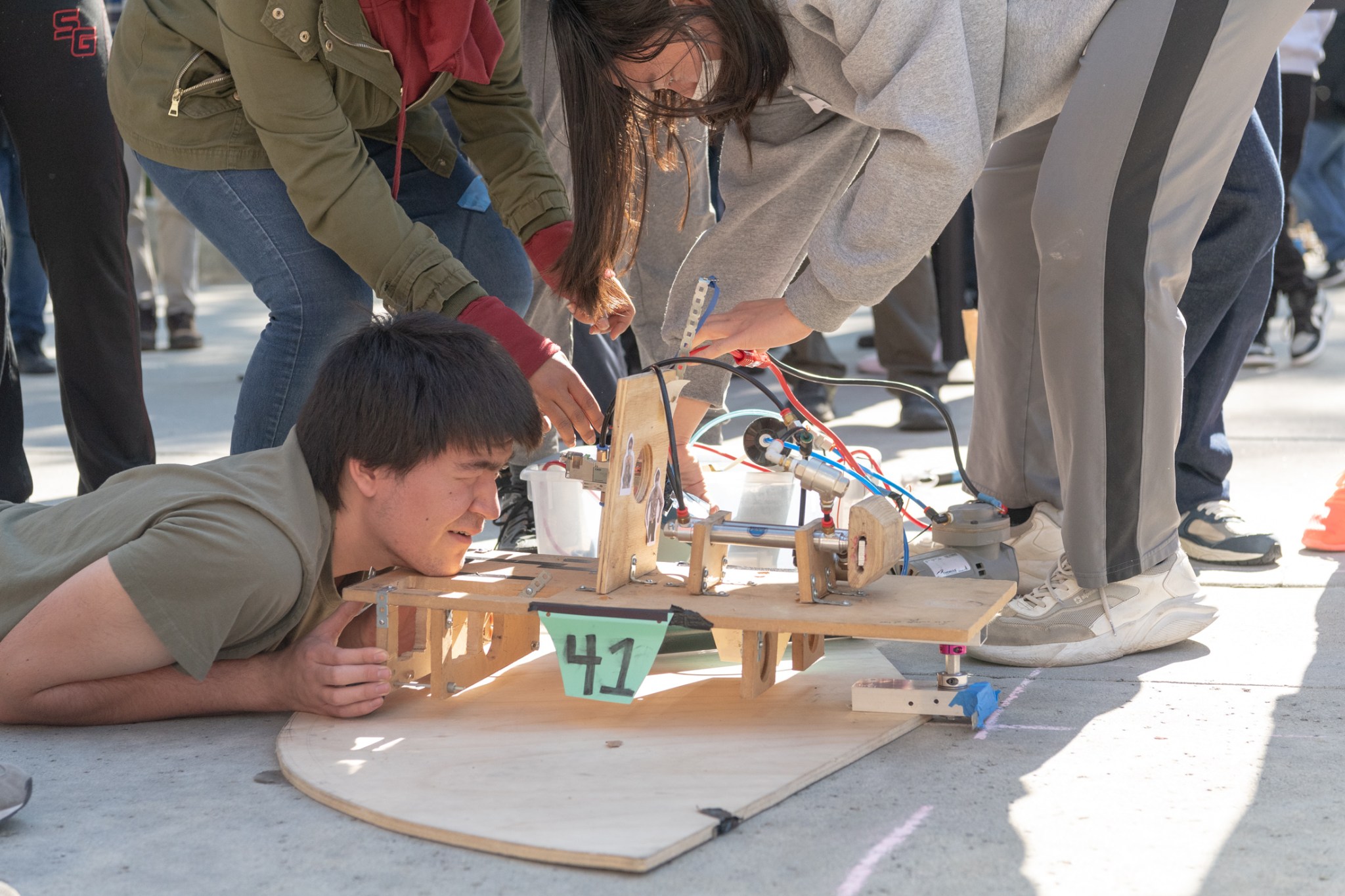Months of preparation led to three teams from one school taking home the top prizes at the 23rd Invention Challenge hosted by NASA’s Jet Propulsion Laboratory.
After a two-year hiatus due to the pandemic, the Invention Challenge made a lively return to NASA’s Jet Propulsion Laboratory in Southern California on Friday. Now in its 23rd year, the long-running tradition brings together students and professional engineers to compete side by side with their homemade machines.
For this year’s Invention Challenge, dubbed the “Sticky Wicket Contest,” teams created devices that launched bouncy rubber balls 5 ¼ inches (13 centimeters) in diameter at five croquet-inspired targets set in an arc about 8 to 16 feet (2 ½ to 5 meters) away. With just 60 seconds to pass the balls in a specific order through the wicket-shaped targets, speed and accuracy were key.
The rules for the Invention Challenge change every year, and teams have several months to design, fabricate, test, and analyze devices that they hope will accomplish the goal of that year’s competition. Hammers and mallets, giant rubber bands and bungee cords, PVC piping and lots of wood, even an iPhone and some laser pointers went into the designs. But a single type of device – made by students at one school – emerged victorious.
Teams from North Hollywood’s Oakwood School took first, second, and third place. Thirty-two students from the school took part, using a trio of similar devices that employed a tension band to shoot balls between two rails toward their goal.
The secret to Oakwood’s success? “Just a lot of practice,” said senior Avalon Bookstaver, who described her team’s first-place-winning device as a “slingshot-crossbow-type thing.” She estimated that each Oakwood student had practiced taking some 200 shots by the time of the competition. The school’s three teams had trained together after class for 15 hours a week since August, testing eight types of devices before settling on a final model that itself went through various iterations, according to their coach, Oakwood STEAM department chair Marcos Arias.
In total, 20 California and one Colorado student team made it to the final competition after two regional events in November winnowed the field from 44 teams. Five JPL-sponsored adult teams competed separately at Friday’s event.
Designed to inspire a passion for engineering, the free contest is one of the only such events that offers students the opportunity to put their skills to the test next to professionals, said JPL mechanical systems engineer Paul MacNeal, who started the Invention Challenge in 1998. Over the years, the contest has provided a competitive but supportive environment for more than 10,000 students to hone their skills in creativity, brain-storming, and solving tricky engineering problems.
“The students are engineers, they just don’t know it,” MacNeal said. “When they’re getting ready for the contest and they’re building their devices and they’re testing them and redesigning them and re-testing them – they are engineers.”
Melissa Pamer
Jet Propulsion Laboratory, Pasadena, Calif.
626-314-4928
melissa.pamer@jpl.nasa.gov
2022-193

















